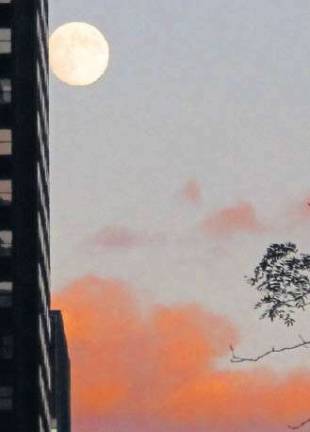Under The Moon on The East Side

Lights twinkle as the descending dark outlines a skyline a little less well known, one fewer conceive of as "Manhattan." Yet, for those Upper East siders, whether out-of-town an hour or a year, that simpler skyline is home. Not quite as aggressive as the towering downtown or iconic West side outlines, the East side cityscape offers proportions more human, more approachable. At a certain point, just before the choice of bridge or tunnel must be made, day or night, the city outline appears -- like a great burst of oxygen, making breathing a little easier, thoughts a bit more excited. That's home, after all, just across the river.
Living far east on the Upper East Side offers a wonderful balance. Until the long promised Second Avenue "Subway-let" actually opens its gates, getting to the East End can be challenging - especially in winter, especially in the early (perhaps the correct term is "late") hours of a long night. Public transportation is spotty, cabs even more spare. Juxtapose to this the wonderful quiet of Carl Shurz Park, verdant for many months of the year. Listen closely, and the sound of the East River breaking against the barriers under the FDR reaches one's ears.
Few night vistas compare with the phenomena of the moon backlighting the shadowed silhouettes of the park's treetops as it glowed in a newly darkened sky, its soft light reflected on puffs of clouds. During the week of August 10, the moon was in her greatest glory. Resting on the tips of buildings, touching treetops, it glowed above the whole city, yet seemed to have chosen the East Side as her personal podium.
Tree tops glistened - even in the warm, early August night. People actually stopped to listen and stare, enjoying the street glow that served to light their way home.
The August lunar disc was a "super" moon, a so-called "Perigee" Moon, when the Man and his Moon, in its elliptical orbit a mere 220,000 (or so) miles above, came closest to the Earth and the Upper East Side.
Perigee-syzygy describes the point at which the Moon is closest to the Earth - the perigee - at the same time the Earth, the Moon and the Sun are aligned - the syzygy. Simply put, the Earth, the Moon and the Sun are all in a line at the time when the Moon is a is closest point to the Earth.
Not to worry! If you missed this perigee-syzygy moon - the astronomical term - the next Super Moon - the astrological term - will appear September 9.